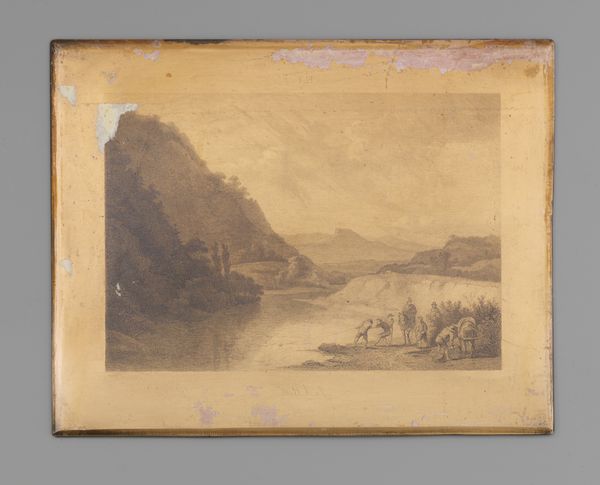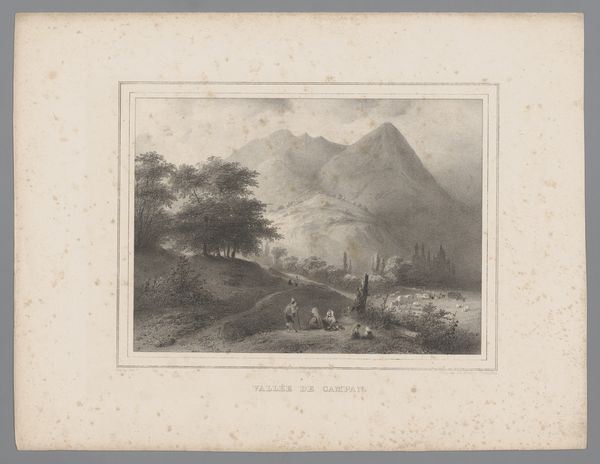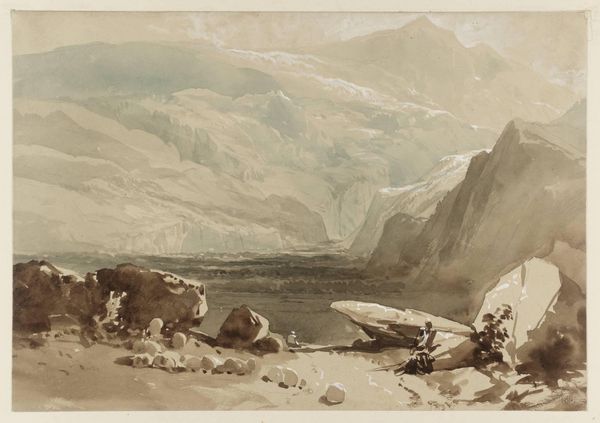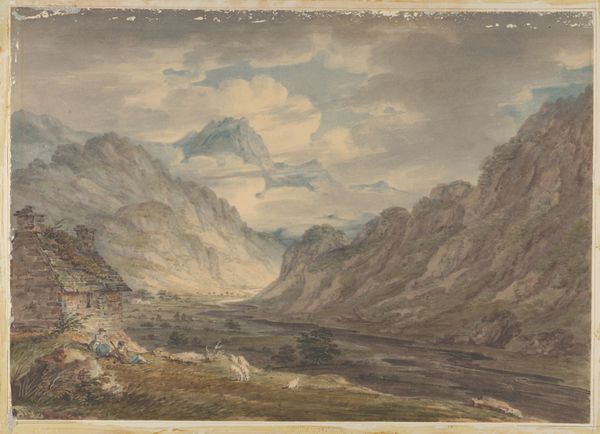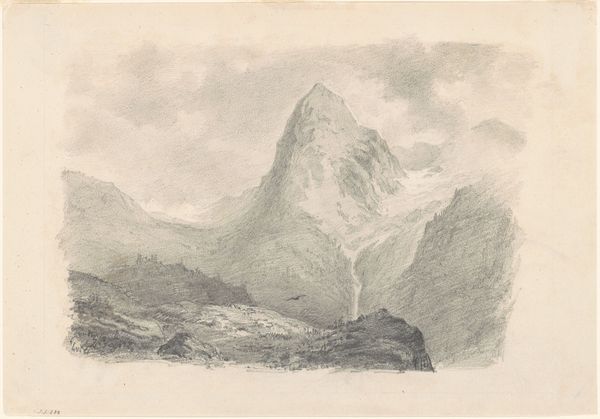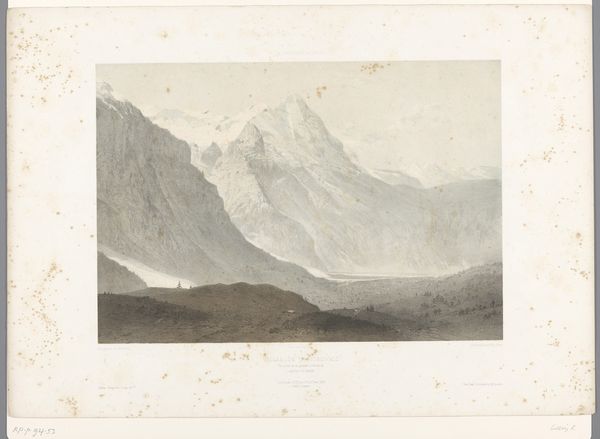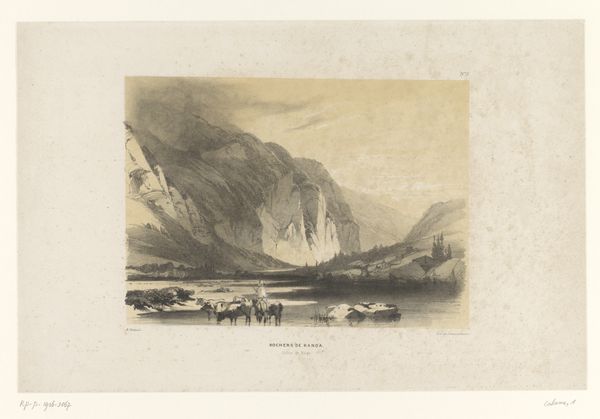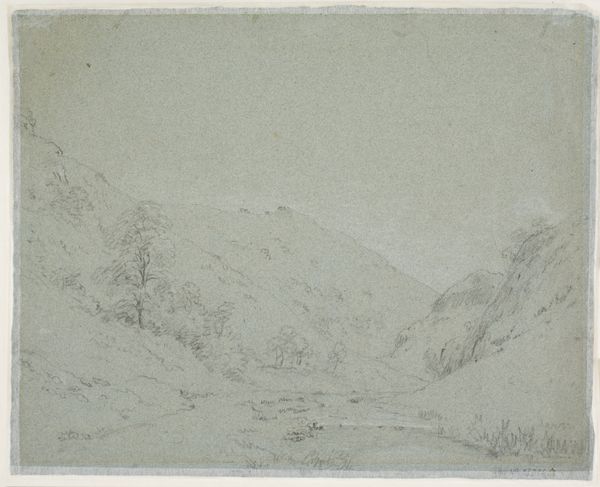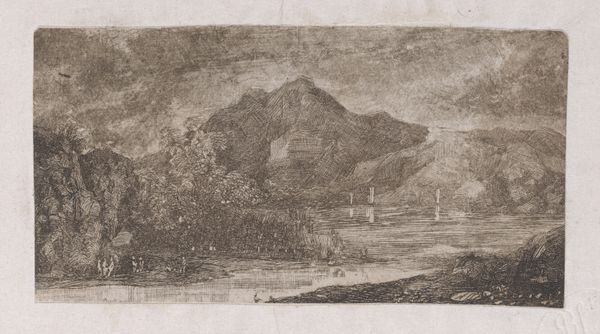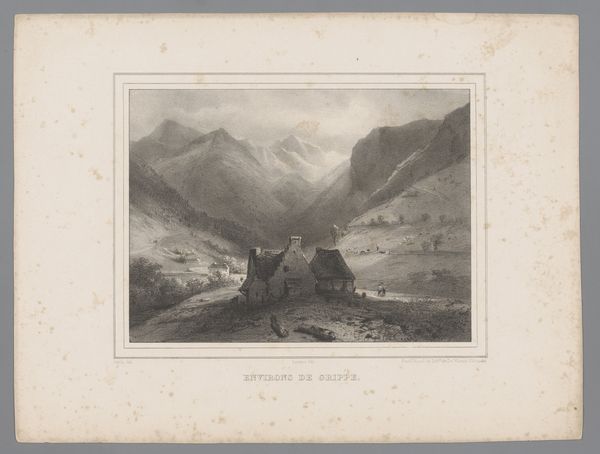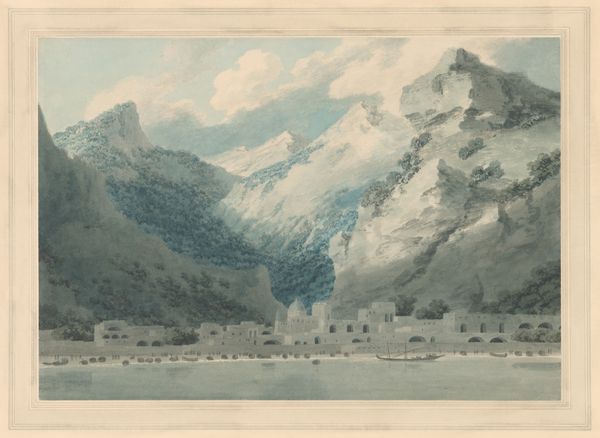
drawing, print, plein-air, watercolor
#
drawing
#
lake
# print
#
plein-air
#
landscape
#
watercolor
#
romanticism
#
mountain
#
watercolor
Dimensions: Sheet: 8 1/4 × 11 13/16 in. (21 × 30 cm)
Copyright: Public Domain
Editor: We're looking at "Llanberis Lake, North Wales" created around 1820-1830, by an artist known as Samuel Jackson. It's a watercolor drawing. I find the monochromatic tones give it a rather somber and quiet feeling. How do you interpret this work, focusing on its formal qualities? Curator: The artist’s manipulation of light and shade is quite striking. Notice how the graded washes of brown and grey subtly define the recession of space, guiding the viewer’s eye from the foreground figures, across the still lake, to the majestic mountain range. What role does the limited palette play in conveying a sense of place? Editor: Well, it seems like the muted colours unify the composition, creating a sense of atmospheric perspective and distance, the monochromatic washes give a certain simplicity. Do you think there’s any kind of symbolism to be read into the simplicity or starkness of the coloration, or lack of colours here? Curator: It's tempting to search for external meanings, but a formalist approach compels us to focus on what is visually presented. Consider the structural relationship between the mountain and the lake. The imposing peak dominates the composition, contrasted by the horizontal calm of the water. Note how the brushstrokes contribute to both textures: the smooth washes evoking the lake's stillness, while short, broken strokes delineate the ruggedness of the mountain. Do you observe the rhythm and balance within these contrasts? Editor: Absolutely, the contrast definitely accentuates the rugged landscape; its power comes from stark variations. It makes you focus on the raw beauty of the nature, instead of distracting colourful elements. The structural balance enhances that feeling of awe. Curator: Precisely. By isolating and examining these formal elements – line, tone, texture, composition – we can understand how Jackson constructed a visually compelling and evocative representation of the Welsh landscape, devoid of anecdotal or historical meaning, if we consider the semiotic relations within its own visual structure. Editor: That’s interesting. It’s a very different way of appreciating art by taking a step back from finding a particular "meaning" to focus instead on its inherent design principles. Thank you for highlighting those compositional relationships. Curator: A pleasure. Paying close attention to the intrinsic elements of any work will ultimately enhance your appreciation.
Comments
No comments
Be the first to comment and join the conversation on the ultimate creative platform.

